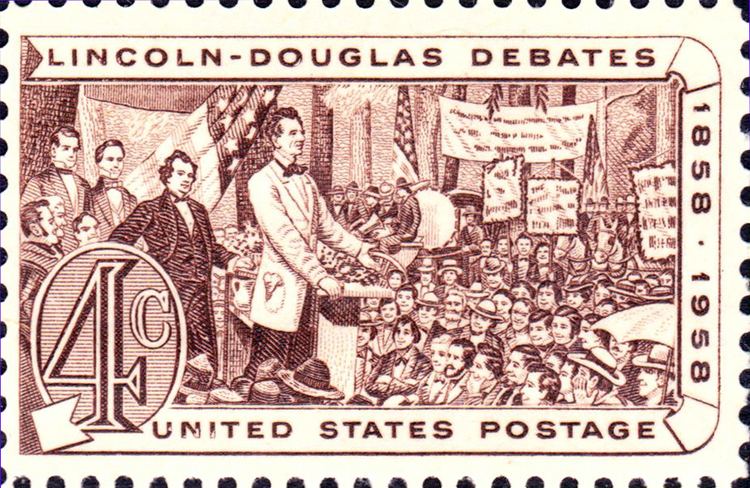Various dates 1860 / 1861 → 42 20 38 25 Start date June 12, 1858 | 34 seats 15 seats 13 8 4 5 | |
 | ||
The United States Senate elections of 1858 and 1859 were elections which had the Republican Party gain five additional seats in the United States Senate, but the Democrats retained their majority. That majority would erode in 1860 with the secession of the southern states leading up to the Civil War. In Illinois, incumbent Stephen A. Douglas (D) and challenger Abraham Lincoln held a series of seven debates, known as the "Lincoln–Douglas debates."
Contents
- Results summary
- Special elections during the 35th Congress
- Races leading to the 36th Congress
- Race leading to the 37th Congress
- Elections during the 36th Congress
- References
As this election was prior to ratification of the seventeenth amendment, Senators were chosen by State legislatures.
Results summary
Senate Party Division, 36th Congress (1859-1861)
Special elections during the 35th Congress
In these elections, the winners were seated during 1858 or in 1859 before March 4; ordered by election date.
Races leading to the 36th Congress
In these general elections, the winners were elected for the term beginning March 4, 1859; ordered by state.
All of the elections involved the Class 2 seats.
Race leading to the 37th Congress
In this general election, the winner was elected for the term beginning March 4, 1861.
This election involved a Class 3 seat.
Elections during the 36th Congress
In this election, the winner was elected in 1859 on or after March 4; ordered by date.
